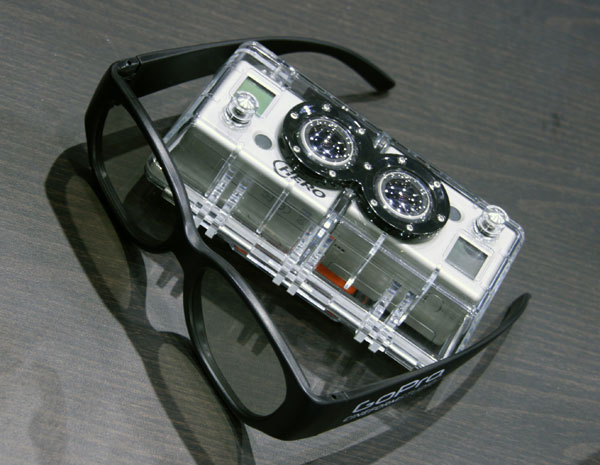DIY 3D

An even less-expensive option was announced by GoPro, whose HD Hero 2D camcorder is so small, it's intended to be mounted on a helmet, car, surfboard, etc. to capture your adventures POV-style. This little gem costs a mere $260—including a waterproof housing—and records 1080p at 30fps or 720p at 60fps in MP4 format to an SD memory card. The camera itself has no viewfinder, but its lens covers 170 degrees, capturing just about everything in front of it. You can also get an optional BacPac ($80), which is an LCD monitor that connects to the back of the camera.

New at NAB was a waterproof housing that combines two Heroes in a stereoscopic configuration with a short synchronization cable. However that cable uses the same connector as the BacPac, so you can't use the LCD monitor in 3D. Once you've shot some footage, you combine the files from the two cameras using free software from GoPro's website, which lets you adjust the convergence and other basic parameters, and the resulting file can then be opened and edited in Final Cut or just about any other standard editing software.
The 3D housing costs $100, so combining that with two HD Heroes, you have a 3D rig for $620. How cool is that? Of course, it's fairly limited—fixed interocular distance (IOD) and zoom/focus, no monitoring—though the company is working on a housing with variable IOD and a way to add a BacPac to the rig.
- Log in or register to post comments


























































